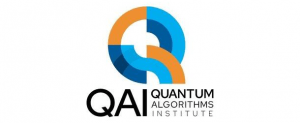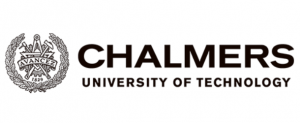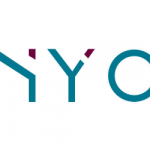Quantum News Briefs June 21: The Canadian Quantum Ecosystem Report 2023; Researchers at Chalmers University develop open source software to accelerate quantum research; Making Indian universities quantum ready + MORE

Quantum News Briefs June 21: The Canadian Quantum Ecosystem Report 2023; Researchers at Chalmers University develop open source software to accelerate quantum research; Making Indian universities quantum ready + MORE
The Canadian Quantum Ecosystem Report 2023
 The Quantum Algorithms Institute in British Columbia, Canada, has a mandate to support the economic growth of the world class quantum computing cluster in BC and across Canada. To gain a better understanding of what is happening in Canada’s rapidly changing quantum sector and the dynamic nature of the quantum talent pool in Canada and around the world, the Quantum Algorithm Institute commissioned a ground–up exploration of Canada’s quantum ecosystem. Quantum News Briefs summarizes the June 16 summary; the document can be reviewed in-entirety by clicking here.
The Quantum Algorithms Institute in British Columbia, Canada, has a mandate to support the economic growth of the world class quantum computing cluster in BC and across Canada. To gain a better understanding of what is happening in Canada’s rapidly changing quantum sector and the dynamic nature of the quantum talent pool in Canada and around the world, the Quantum Algorithm Institute commissioned a ground–up exploration of Canada’s quantum ecosystem. Quantum News Briefs summarizes the June 16 summary; the document can be reviewed in-entirety by clicking here.
Most of the expertise on quantum physics and quantum technologies is still held by academics, professors, post–graduate and graduate students in universities, colleges and research institutions. However, since 2015, the world has seen an explosion of interest in quantum technologies, including increasing government support and business investment[1].
On the ground in Canada, the transition of quantum experts out of academia and into startup companies is accelerating, reflecting the swift growth in the commercialization of quantum technologies.
To gain a better understanding of what is happening in Canada’s rapidly changing quantum sector and the dynamic nature of the quantum talent pool in Canada and around the world, the Quantum Algorithm Institute commissioned a ground–up exploration of Canada’s quantum ecosystem. This report focuses on analysis of national and international patent filings, non-peer-reviewed publications in the arXiv.org database, and self–reported data gleaned from users of social media [2].The analysis captures a real-time perspective on the transition to commercialize quantum technologies. This ecosystem analysis uses data available in December 2022 and January 2023, to illuminate and quantify some aspects of research and commercial activity and the workforce in Canada’s quantum sector.
This report has been created as an interactive online document. In the online version, the Figures are interactive and can be explored to highlight attributes by, for example, year or country. Readers can also download a static PDF of the report.
Researchers at Chalmers University develop open source software to accelerate quantum research
 A team of researchers at Chalmers University of Technology in Sweden have now developed open-source, freely available software that will pave the way for new discoveries in the field and accelerate quantum research significantly.
A team of researchers at Chalmers University of Technology in Sweden have now developed open-source, freely available software that will pave the way for new discoveries in the field and accelerate quantum research significantly.
Of particular interest to researchers in the field are the superconducting properties of quantum particles that give components perfect conductivity with unique magnetic properties. These superconducting properties are considered conventional today and have already paved the way for entirely new technologies used in applications such as magnetic resonance imaging equipment, maglev trains and quantum computer components.
The Chalmers researches have developed the open-source software SuperConga, which is free for everyone to use, and specifically designed to perform advanced simulations and analyses of quantum components. The program operates at the mesoscopic level, which means that it can carry out simulations that are capable of ‘picking up’ the strange properties of quantum particles, and also apply them in practice. The open-source code is the first of its kind in the world and is expected to be able to explore completely new superconducting properties and eventually pave the way for quantum computers that can use advanced computing to tackle societal challenges in several areas.
These new superconductors continue to be highly enigmatic materials – just as their conventional siblings once were when they were discovered in a laboratory more than a hundred years ago. After that discovery, it would be more than 40 years before researchers could describe them in theory. The Chalmers researchers now hope that their open-source code can contribute to completely new findings and areas of application. Click here to read complete June 20 article on Chalmers website.
Making Indian universities quantum ready
 India recently announced the National Quantum Mission (NQM) to ramp up quantum computing and communications, quantum sensing and quantum materials and devices. The NQM will open opportunities for quantum education and prepare students and teachers to use and innovate in quantum technology. A June 14 article in Nature India discusses the nation’s plans to enable Indian University to become quantum ready.
India recently announced the National Quantum Mission (NQM) to ramp up quantum computing and communications, quantum sensing and quantum materials and devices. The NQM will open opportunities for quantum education and prepare students and teachers to use and innovate in quantum technology. A June 14 article in Nature India discusses the nation’s plans to enable Indian University to become quantum ready.
India has set the ball rolling in quantum education. The Indian Institute of Technology Madras recently launched an advanced course in quantum computing technology with quantum algorithms and programming of quantum computers. The Chatterjee Group (TCG) ― Centres for Research and Education in Science and Technology (CREST), is building India’s first quantum computer in association with the Tata Institute of Fundamental Research and Indian Institute of Science Bengaluru. Several quantum computing startups such as Globally Xanadu, Classiq, QRDLab and Qulabs.ai are training educational institutes and industries to build the quantum workforce in the country.
However, India faces a talent shortage and a skill gap in the quantum technology sector. This may be due to a lack of general awareness about potential career and business opportunities in the field. Many universities do not yet have experts in quantum computing, partly due to inadequate training resources and cutting-edge laboratories for hands-on learning experience. Very few universities like IIT Madras and IISc Bangalore offer courses on quantum technology.
Importantly, investing in the development of sophisticated quantum labs and research centres as well as international collaborations, will be crucial.
Government policies and investments, as in the case of futuristic technologies like AI, are also needed to provide a supportive ecosystem for quantum research and development. With the right investments in education, infrastructure, policy, and partnerships, Indian universities can become a global hub for quantum education and research. Click here to read the Nature India article in-entirety.
Quantum miners would yield ‘massive’ energy savings for blockchain
 University of Kent researchers compared three quantum systems to an ASIC miner, and the quantum machines were demonstrably more energy efficient. Quantum News Briefs summarizes June 8 article by Tristan Greene in Coin Telegraph.
University of Kent researchers compared three quantum systems to an ASIC miner, and the quantum machines were demonstrably more energy efficient. Quantum News Briefs summarizes June 8 article by Tristan Greene in Coin Telegraph.
According to the team’s preprint research paper, the systems utilizing quantum computing demonstrably outperformed standard mining rigs in energy efficiency:
“We show that the transition to quantum-based mining could incur an energy saving — by relatively conservative estimates — of about roughly 126.7 TWH, or put differently the total energy consumption of Sweden in 2020.”
As the researchers point out, blockchain mining is one of the few areas of quantum computing where error correction isn’t such a big deal. In most quantum functions, errors create noise that functionally limit a computing system’s ability to produce accurate computations.
The very specific problem of blockchain mining doesn’t require a full-service quantum computing solution. As the researchers put it, “a quantum miner is not, and need not be, a scalable, universal quantum computer. A quantum miner need only perform a single task.”
Despite the potential energy savings, it bears mention that the researchers focused on a type of quantum computing system called a “noisy intermediate-scale quantum” (NISQ) system. Typically, however, NISQ systems only operate with about 50-100 qubits, though there doesn’t appear to be an industry standard.
However, according to the preprint paper, quantum miners should demonstrate “massive” energy savings at a size of around 512 quantum bits, or “qubits” — a term somewhat analogous to classical computing bits. Click here to read article in-entirety.
Sandra K. Helsel, Ph.D. has been researching and reporting on frontier technologies since 1990. She has her Ph.D. from the University of Arizona.
Categories: quantum computing



















